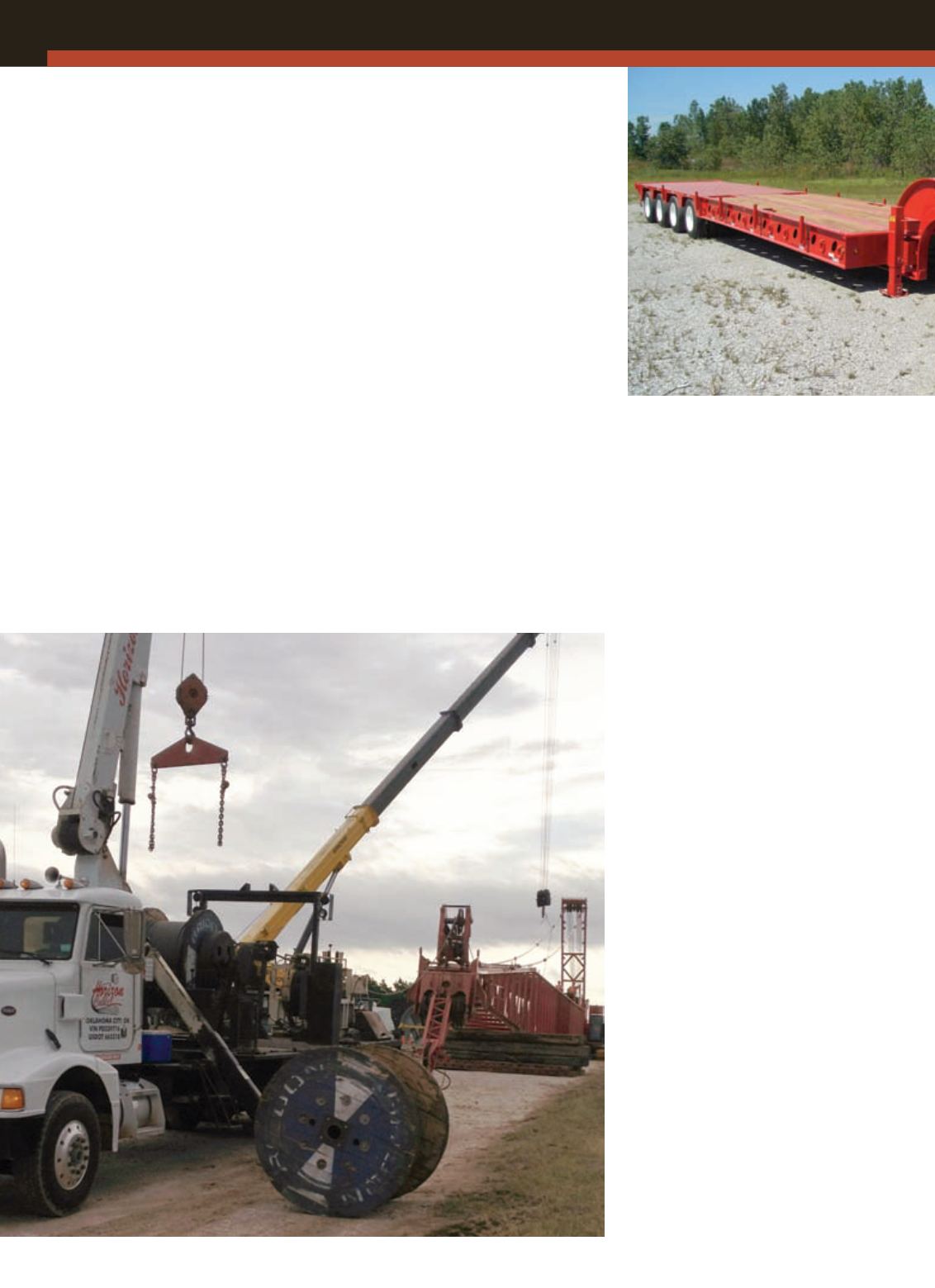
26
ACT
AUGUST 2013
INDUSTRY REPORT
OIL & GAS
the truck,” says Rodney Offield, manager
of the Pittsburgh, PA branch of Renegade
Wireline Services. “The cranes also have to
have a high load rating at the boom tip to
handle the intense weight of the multi-ton
rigging and cable-hoisting operations.”
Offield says that in the oil and gas
business, jobs come suddenly and his
company must react immediately.
Renegade doesn’t have to worry about
obtaining last-minute highway permits
because the boom trucks are mounted
on commercial chassis that comply with
federal bridge laws.
“Bigger cranes are subject to federal size
and weight laws in Pennsylvania,” he says.
“If we used truck cranes that had similar
capabilities to these boom trucks or bigger
cranes, we’d have to have a person in-office
filing permits each time we wanted to
cross state lines or drive over a bridge.”
When Navistar International Corp.
reintroduced its PayStar 5900 Set-Back
Axle (SBA) severe-service model at
ExpoCam, Canada’s National Trade Show,
in April, the company made a point of
emphasizing that the model, now featuring
the Cummins ISX15 engine with selective
to meet the demanding conditions
of oil and natural gas fields is Talbert
Manufacturing.
“First and foremost, our company has
earned a reputation for the ruggedness
and durability of its trailers over the past
75 years,” says Greg Smith, vice president
of sales and manufacturing at Talbert.
“Over 90 percent of Talbert trailers built
since 1985 are still in operation today.
That same durability makes our trailers
well suited for oil fields.”
Talbert’s series of three-, four- and five-
axle lowbed, gooseneck trailers initially
were built to the specifications of the
company’s dealer in Corpus Christi, TX.
The popular 60 FG Oil Field Lowbed
is 56 feet, 3 inches long, 8 feet, 6 inches
wide and 40 inches high. It weighs 27,600
pounds and has a capacity of 120,000
pounds (with 110,000 pounds capacity in
any 16-foot load base). Smith points out
that Talbert designs to the highest possible
safety factor at any capacity.
“We don’t sell those trailers to any other
segment than the oil and gas industry,” he
says. “Not only do they have to stand up
to off-road conditions, but they also need
to be able to handle continuous operation
from site preparation through final clean-
up.”
He notes that another important
consideration is the nature of the loads.
“These users work with a lot of
compressors, generators, fracking tanks
and other items on a self-contained base
that need to be picked up and moved
from place to place,” he says. “They can
use a powerful winch to lift those skids
over the trailer roller and then drag them
into place, using the trailer’s guide posts
to help keep the load where it needs to be.
It takes a special type of trailer to handle
all of that.”
Smith says the oil-field series has
catalytic reduction (SCR) technology, was
a very good fit for Canada’s oil fields.
The engine offers robust electronic
controls and 400 to 600 horsepower
ratings with 1,450-2,050 pound-feet
of torque for excellent power and
performance, and the frame-rail options
and aluminum cab deliver unsurpassed
strength and maneuverability, according to
Navistar. The PayStar 5900 SBA, available
as either a truck or tractor, can handle
gross weights of up to 150,000 pounds. A
sloped hood enhances visibility through a
one-or two-piece windshield.
“Canada can be tough on a vehicle,
and the power of the ISX15 makes our
already rugged vehicles adaptable for any
environment,” says Mark Belisle, Navistar
Canada president.
Focused on energy
Another company that takes considerable
pride in offering equipment designed
The Talbert 60-ton Oil Field lowbed
trailer with four axles includes a cable
roller with spherical bearings between
gooseneck main beams at rear.
Horizon cable
prepares to install a
large-diameter crane
line at a jobsite.


